Kristine Hughes's Blog, page 61
April 12, 2016
VIDEO WEDNESDAY - OLDEST FOOTAGE OF LONDON EVER
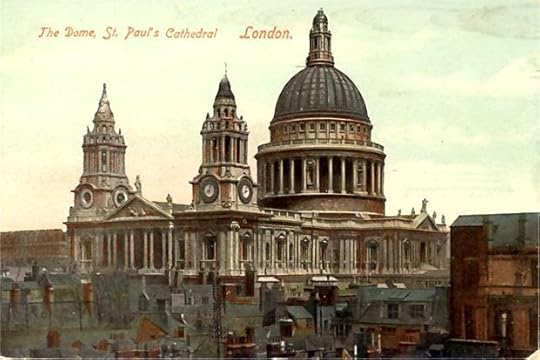
Fabulous footage of the City from 1917 interspersed withmaps and side by side comparisions of what the same film shots look like today. (11 mins.)
Published on April 12, 2016 23:00
April 11, 2016
BILL BRYSON ON BRITAIN: ALWAYS A DELIGHT
Bill Bryson's newest book is already high on the best seller list, so he needs no plug from me -- Victoria here relating some delightful hours spent with Bryson's insightful, comic, and profound views of and about Britain.
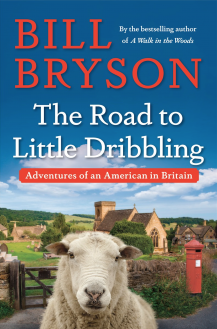
Twenty years ago when he published Notes from a Small Island, I became a fan -- having shared a few similar experiences in my travels around the UK and having hailed from the Midwest (he is from Iowa originally). I envied him his continent-traveling work. Now he has moved back to Britain, become a dual citizen, and followed the suggestion of his publishers to do a followup of his popular Notes From A Small Island.
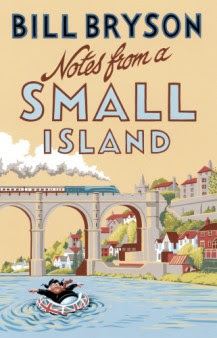
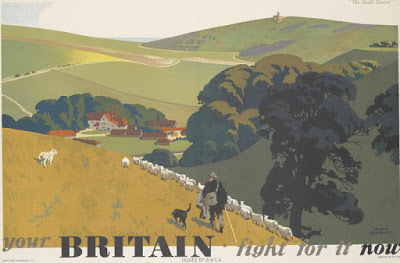 Iconic WWII poster by Artist Frank Newbould
Iconic WWII poster by Artist Frank NewbouldHe covers all sorts of subjects such as the ideal of Britain as represented by iconic posters of during the WWII. He searched for and found the source for the poster above, one of the best by Frank Newbould in a series created in 1939 on the eve of the war to inspire the population by giving them reminders of what was worth fighting for. Only slightly altered, Bryson found the Sussex coastline and the Belle Tout lighthouse almost as Newbould painted them.
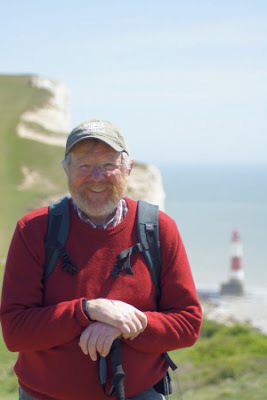 Nearby he was photographed above the Beachy Head lighthouse.
Nearby he was photographed above the Beachy Head lighthouse.To shape his rambles, Bryson drew a line as straight as he could from Land's End at the southwestern tip of Cornwall to the northern most point, Cape Wrath in Scotland.
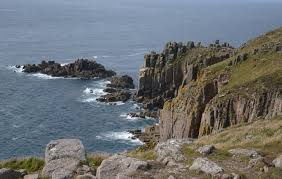 Land's End
Land's End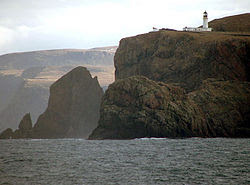 Cape Wrath
Cape WrathAlong his journey, traveling by bus, train and auto, visited London as well as small towns and villages; he made observations on urbanization, the eccentricities of aging, the joys of public footpaths, and the good and bad of the underground system, among many other subjects. He investigated the area of Heathrow airport and speculated about its future expansion.
One of his favorite London sights is also one of mine: the house and studio of artist Frederic Leighton, president of the Royal Academy in 1878, and a favorite artist of Victoria and Albert. He traveled widely and painted many dramatic desert scenes as well as reproducing the decor in his residence.
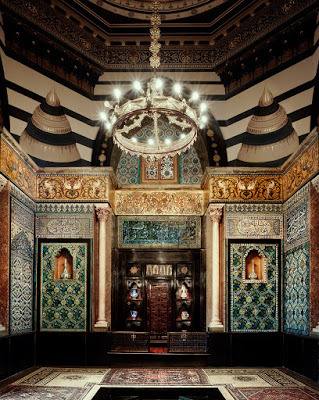 Leighton House Museum, London
Leighton House Museum, LondonHe visited a village I have enjoyed: Selborne and the home of Gilbert White, who spent his life studying the nature of his home locale, published in 1788. My husband and I visited a few years ago when we were on a Jane Austen binge, for it is near Chawton and White's book was known to her. We enjoyed the museum, the bountiful garden, and an excellent pub down the street.
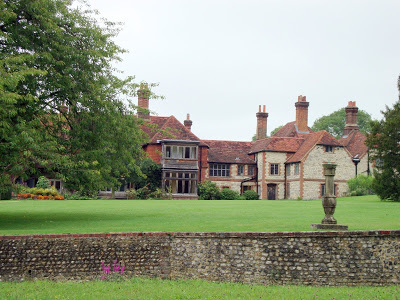 Back View of Gilbert White's House
Back View of Gilbert White's HouseBryson did not ignore ancient Britain, stopping at Avebury and Stonehenge. At the all latter site, he was pleased to find the improvements made lately. Though access to the stones is still restricted somewhat, the visitor center, he says, is much better. Perhaps I need a return visit. I remember finding the facilities quite shabby at Stonehenge years ago.
One spot on my "to do" list has to be Calke Abbey in Derbyshire. More than 400 years of a family's life were spent here. The National Trust acquired the house in 1985 after it had been abandoned for many years. They made the building into a unique experience. Instead of renovation and restoration, they left it as it was, more or less, calling it the 'un-stately home,' a jumble of furniture and art, even to the unmade beds.
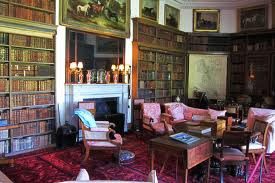 Calke Abbey library
Calke Abbey libraryLike Bill Bryson, I found the Lake District almost impossibly beautiful. And even better is the preservation which has kept development from spoiling it. The main danger, he says, is from the crowd of people who can't resist its charms. Who can blame them?
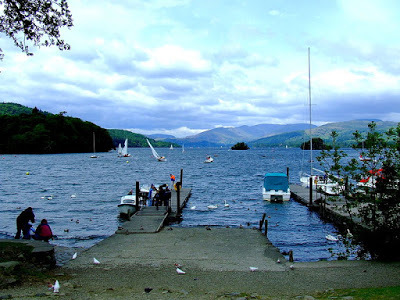 Windermere
WindermereCape Wrath is beyond Scotland's Highlands, an area I need to visit someday. How have I missed it? I've really not been north of Edinburgh. Shame on me.
I hope this short account has whetted your appetite for this wonderful book, filled with insight, opinion and delight. Here's to good reading!
Published on April 11, 2016 00:00
April 7, 2016
POST TOUR: EXPLORING PART OF THE CITY OF LONDON
Victoria here, relating our activities after the Duke of Wellington Tour back in September 2014. After wandering Hampstead, Kristine and I needed a good sit-down -- and where better than on a London bus...so we grabbed one and had a ringside seat for the street scenes from Hampstead all the way to the City of London. It is always fun to explore a new area -- and we were looking for Cheapside, once a popular shopping area.
Here's a bit of what we saw -
.
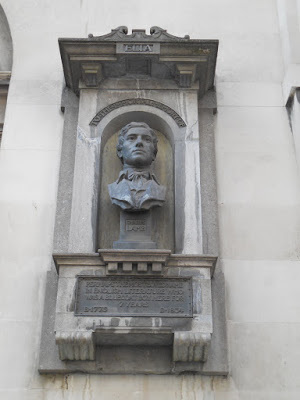 Elia, Charles Lamb, a bust by William Reynolds-Stephens in Gitspur Street on the wall of St. Sepulchre-without-Newgate
Elia, Charles Lamb, a bust by William Reynolds-Stephens in Gitspur Street on the wall of St. Sepulchre-without-Newgate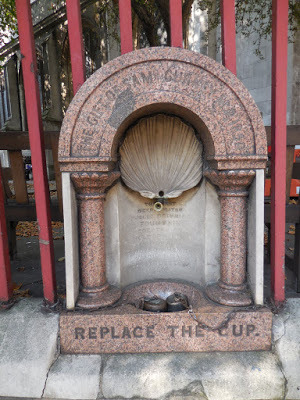
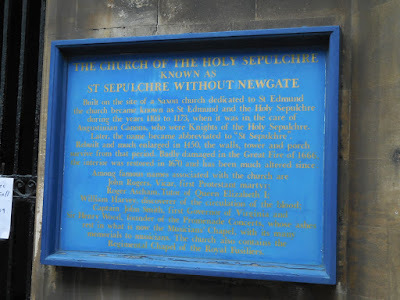
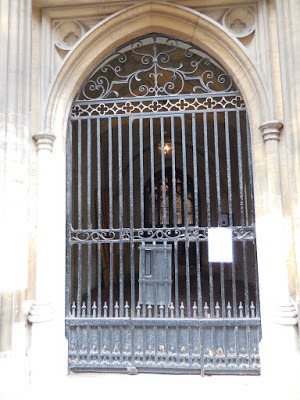
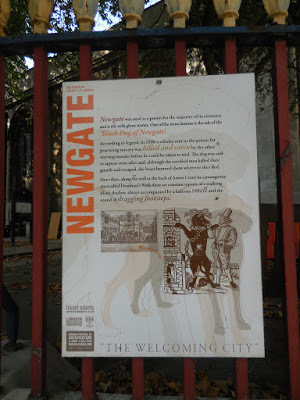
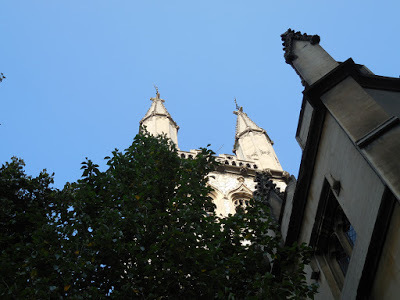
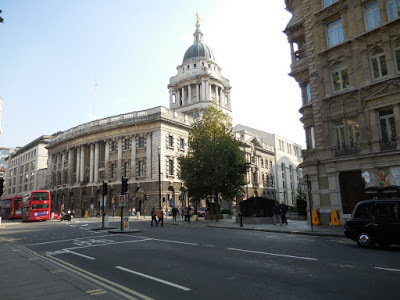 Old Bailey
Old Bailey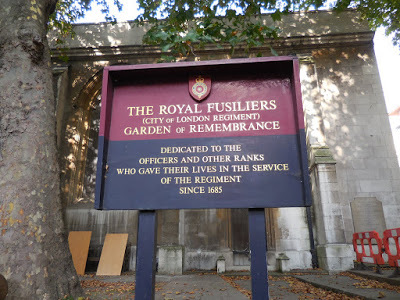
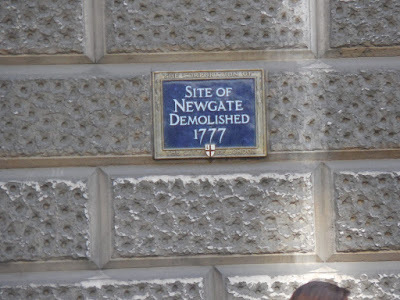
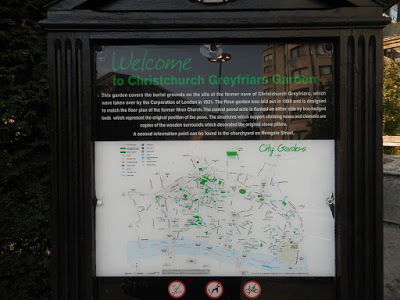
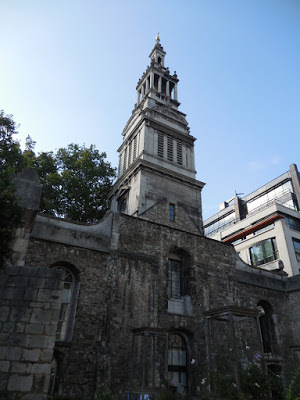 Christchurch Greyfriars Garden
Christchurch Greyfriars Garden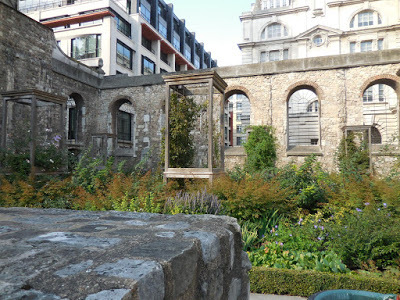
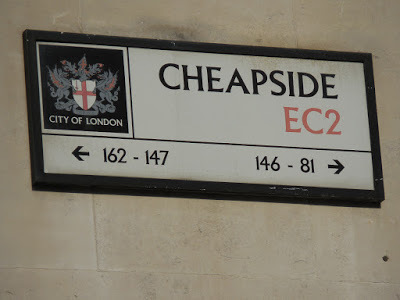
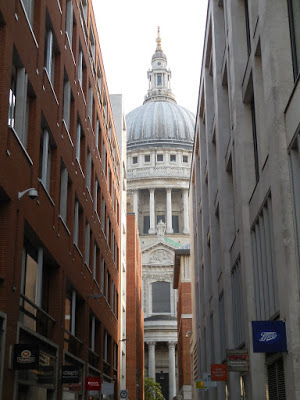 St. Paul's
St. Paul's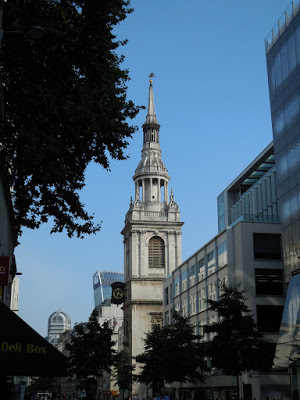 St. Mary-le-Bow
St. Mary-le-Bow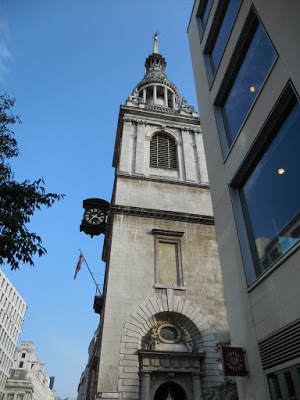
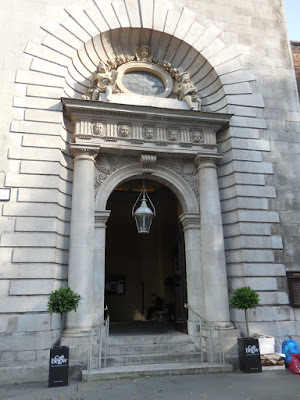
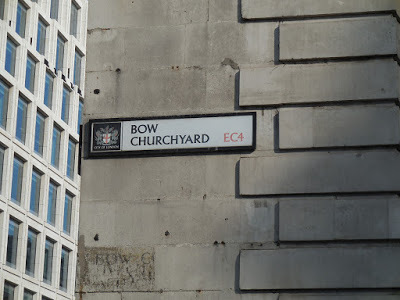
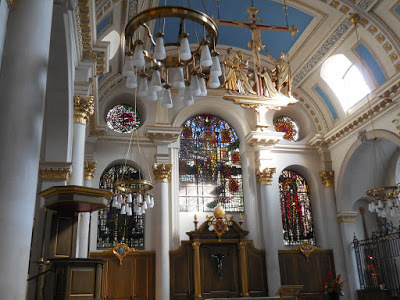 St. Mary-le-Bow interior
St. Mary-le-Bow interior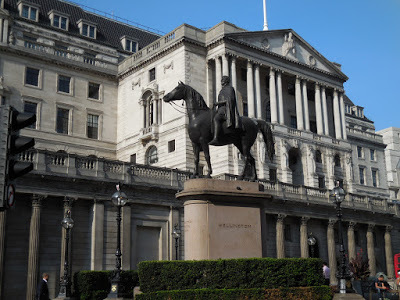 Bank of England
Bank of England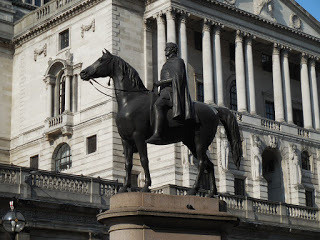 Duke of Wellington by Francis Leggatt Chantrey;The Duke, Queen Victoria, and Frederick Augustus II, King of Saxony, attended the unveiling on June 18, 1844, anniversary of the Battle of Waterloo.
Duke of Wellington by Francis Leggatt Chantrey;The Duke, Queen Victoria, and Frederick Augustus II, King of Saxony, attended the unveiling on June 18, 1844, anniversary of the Battle of Waterloo.
Published on April 07, 2016 23:00
April 5, 2016
VIDEO WEDNESDAY - BYGONE ROYALS
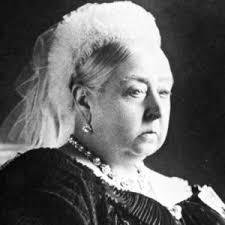
Queen Victoria visits Dublin 1897
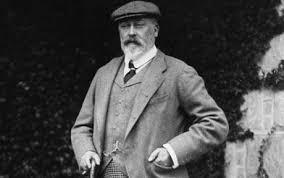
King Edward VII at Sandringham 1909
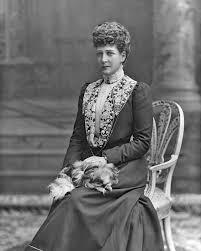
Queen Alexandra at various events - 1910 to 1925
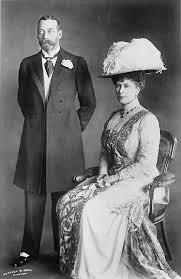
King George V and Queen Mary welcome the Duke of Gloucester home

Edward VIII/The Duke of Windsor
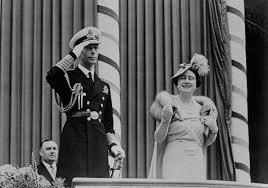
King George VI and Queen Elizabeth visit Washington D.C. 1939
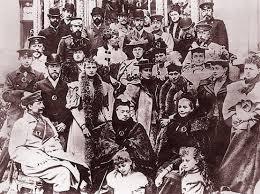
Documentary European Royal Families featuring various royals in early 20th century newsreels (28 mins)
Published on April 05, 2016 23:00
April 4, 2016
NUMBER ONES: A FEW WE FOUND IN ENGLAND
In London, Windsor, Hampstead, and elsewhere, we found lots of Number Ones to complement our favorite, Apsley House! Which as our faithful readers will know, is the London home of the Dukes of Wellington, and the Wellington Museum housing a distinguished art collection as well as the many awards presented to the first Duke for his leadership of the Allied defeat of Napoleon in 1815.
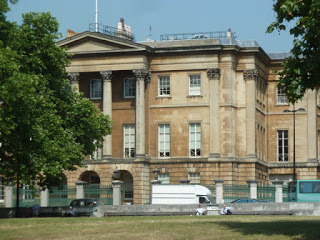 The address of Apsley House is actually 149 Piccadilly, Hyde Park Corner, London, But it has long been known as Number One London
The address of Apsley House is actually 149 Piccadilly, Hyde Park Corner, London, But it has long been known as Number One London
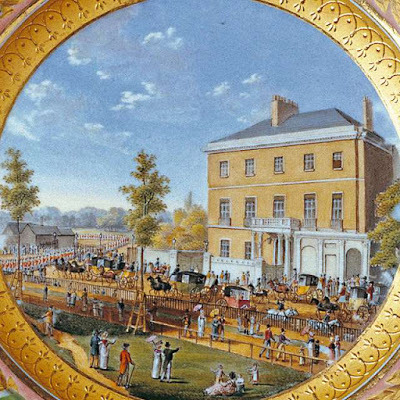 The original house
The original house
From the English Heritage website: "Apsley House was originally designed and built between 1771 and 1778 for Lord Chancellor Henry, 1st Baron Apsley (later 2nd Earl Bathurst), by the fashionable architect Robert Adam (1728–92). The site chosen was on Piccadilly, at the formal entrance to Hyde Park, which was Crown land. Bathurst negotiated the lease of land from the Crown in order to build his new house. Apsley was the first house on the north side of Piccadilly, located opposite a turnpike with toll houses, and consequently it became known as ‘Number 1, London’. Its correct postal address is now 149 Piccadilly.
The original house was a five-bay red brick building, with a spacious entrance hall and central colonnaded oval staircase. Adam had to design the house to respect the existing stable block on the eastern side, which contributed to its irregular floor plan. Adam completed the building and furnishing of the house at a cost of £10,000. The structure of this house survives underneath the later stone encasement and extensions."
Here are some of our Number One Discoveries...in no particular order...
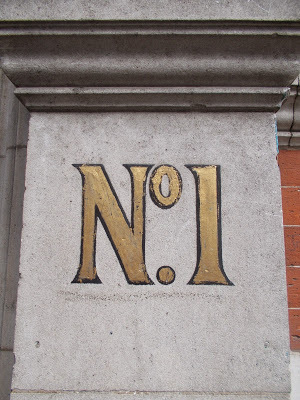
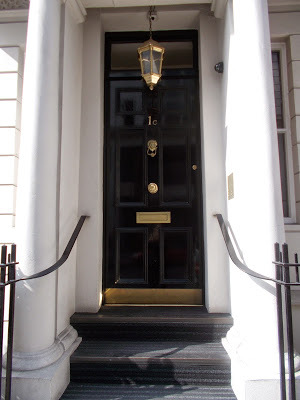
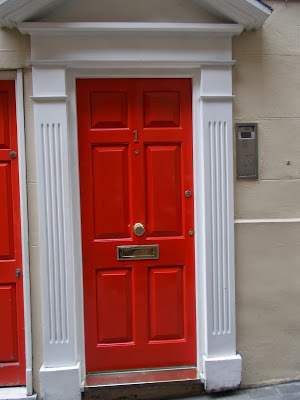
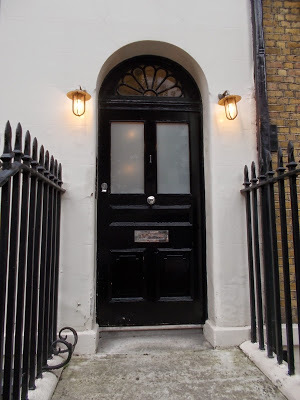
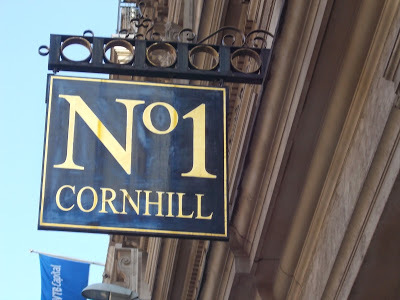
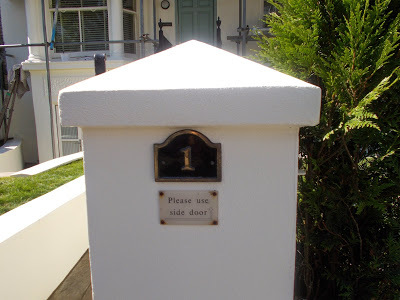
Deal
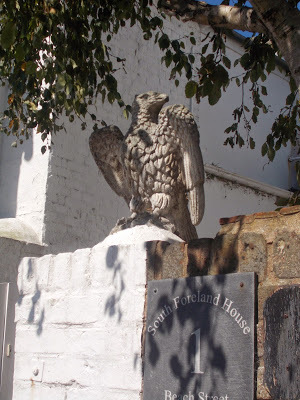
Deal
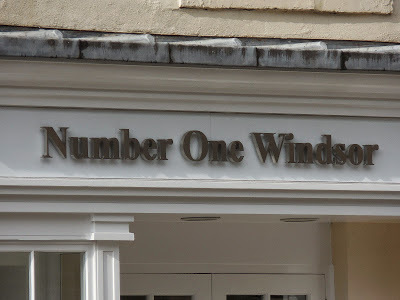
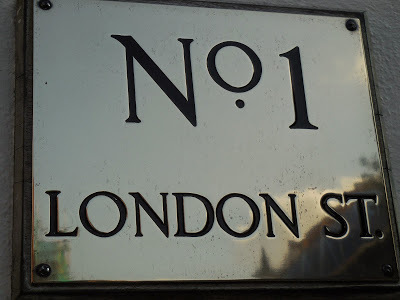
 The address of Apsley House is actually 149 Piccadilly, Hyde Park Corner, London, But it has long been known as Number One London
The address of Apsley House is actually 149 Piccadilly, Hyde Park Corner, London, But it has long been known as Number One London The original house
The original houseFrom the English Heritage website: "Apsley House was originally designed and built between 1771 and 1778 for Lord Chancellor Henry, 1st Baron Apsley (later 2nd Earl Bathurst), by the fashionable architect Robert Adam (1728–92). The site chosen was on Piccadilly, at the formal entrance to Hyde Park, which was Crown land. Bathurst negotiated the lease of land from the Crown in order to build his new house. Apsley was the first house on the north side of Piccadilly, located opposite a turnpike with toll houses, and consequently it became known as ‘Number 1, London’. Its correct postal address is now 149 Piccadilly.
The original house was a five-bay red brick building, with a spacious entrance hall and central colonnaded oval staircase. Adam had to design the house to respect the existing stable block on the eastern side, which contributed to its irregular floor plan. Adam completed the building and furnishing of the house at a cost of £10,000. The structure of this house survives underneath the later stone encasement and extensions."
Here are some of our Number One Discoveries...in no particular order...






Deal

Deal


Published on April 04, 2016 00:00
April 1, 2016
POST-TOUR: EXPLORING HAMPSTEAD, PART TWO
Thursday 9/18
Sick
Walk Hampsead church constable SEPARATE POST-vh
Flask Walk to Burgh House for tea and tour
Hampstead roaming Lunch at the Wells I had bread and butter and iced tea
stroll back to high street tried bus to cheapside vicky had to top up oyster card
V'S BURGH HOUSE PICS
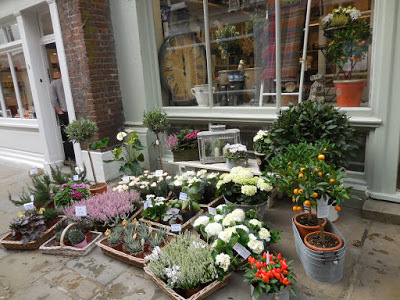
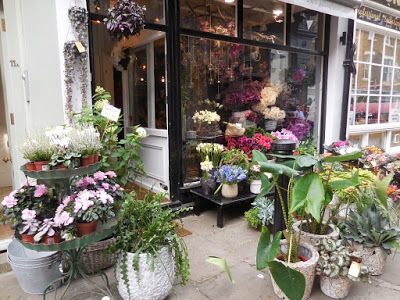
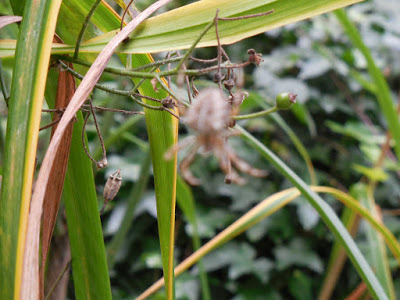
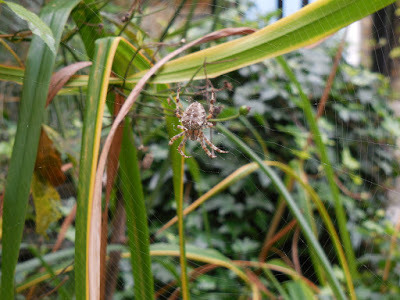
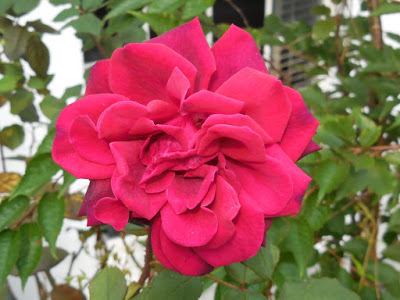
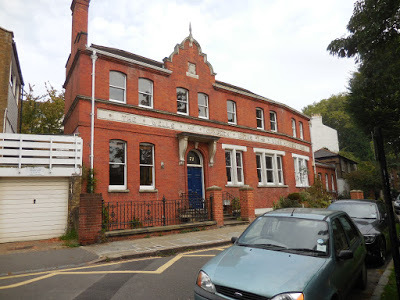
Above and below:
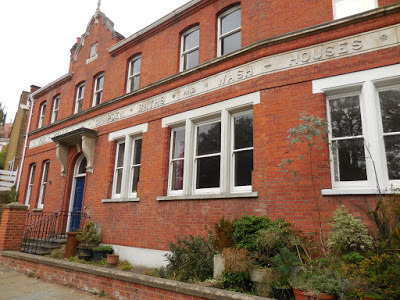
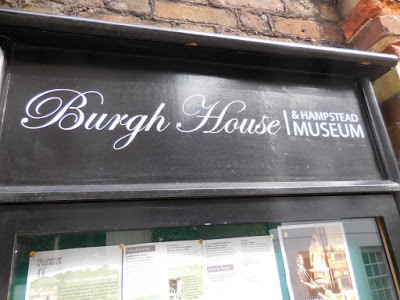
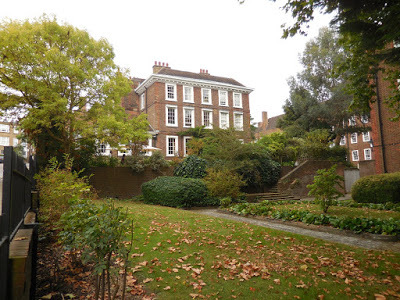 Above and below: Burgh House, New End Square
Above and below: Burgh House, New End Square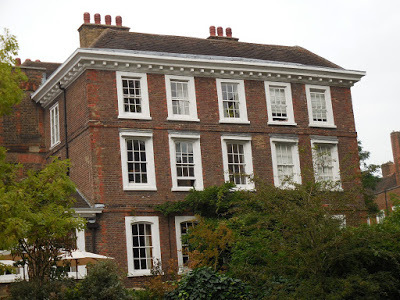
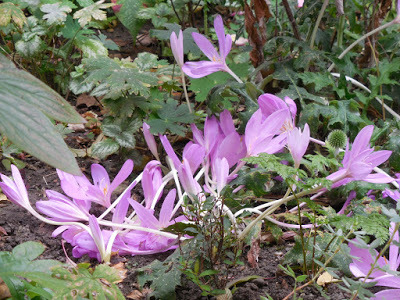 Those lovely fall crocus blooming in the flowerbeds
Those lovely fall crocus blooming in the flowerbeds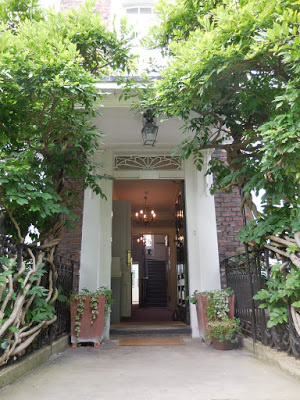 Burgh House, in Queen Anne Style, was built in 1704.
Burgh House, in Queen Anne Style, was built in 1704.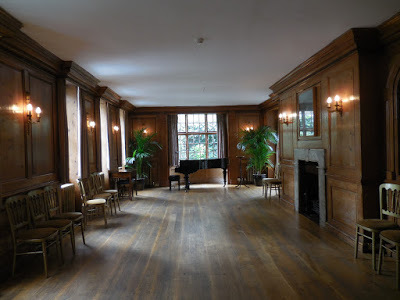 Main floor Music Room
Main floor Music Room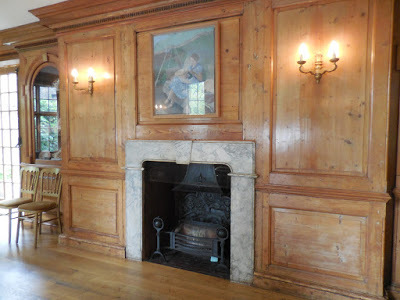 Music Room
Music RoomThe house escaped bomb damage in WW II; the Hampstead Museum was opened upstairs in 1979.
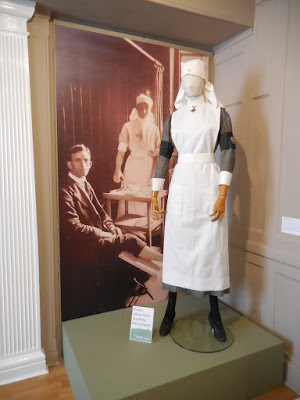 Museum displays of WWI uniforms
Museum displays of WWI uniforms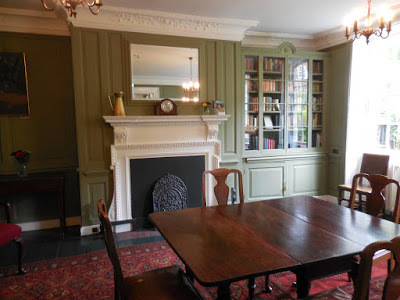
Above and Below, The Library Room for local research
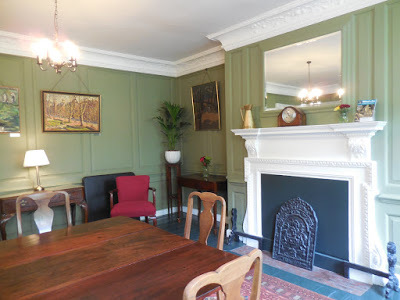
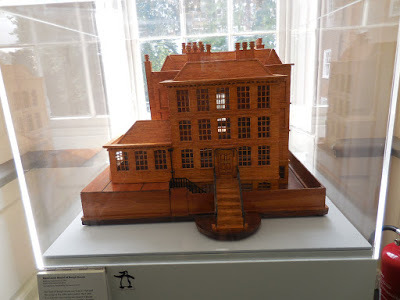 Model of Burgh House
Model of Burgh House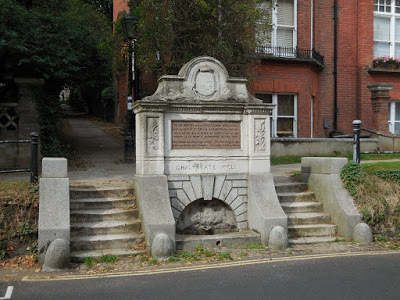
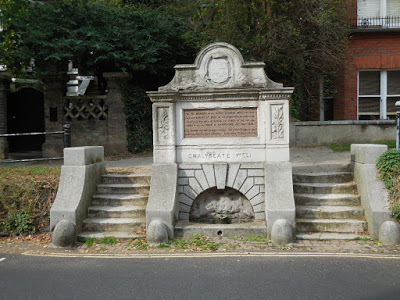
The Chalybeate Well, no longer functioning, once a flowing mineral spring
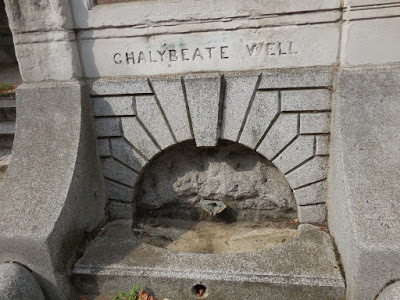
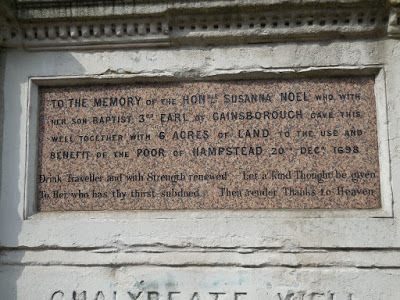
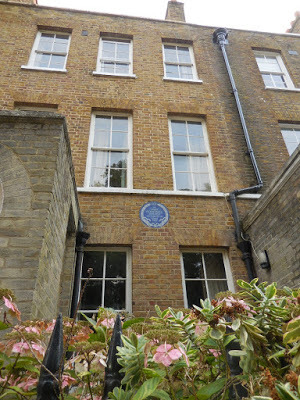 Residence of John Constable in Hampstead
Residence of John Constable in Hampstead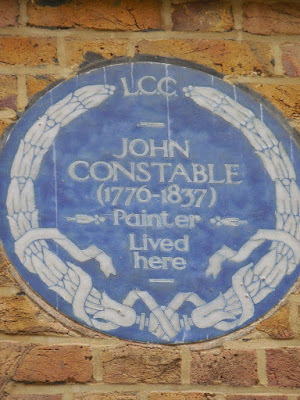

The Wells, 30, Well Walk, provided delicious fare, both liquid and solid, just when we needed it.
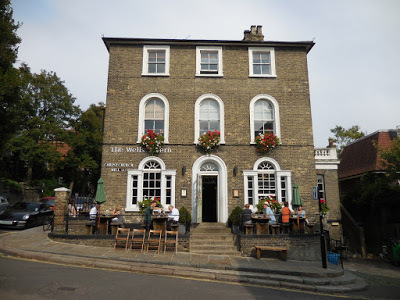
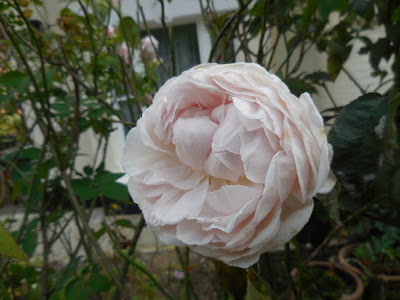 more luscious roses
more luscious roses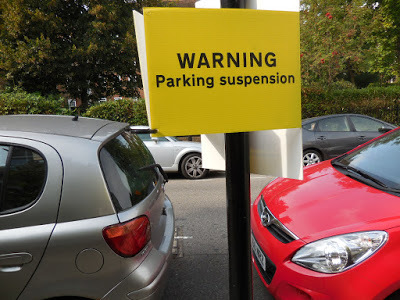 Hunh???
Hunh???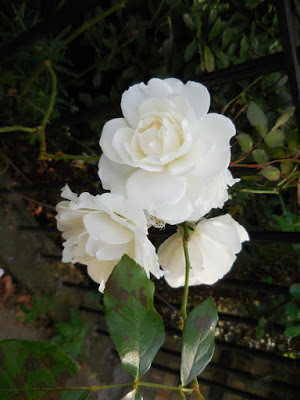
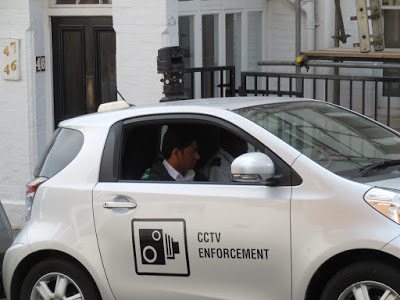 Keeping London well-observed!
Keeping London well-observed!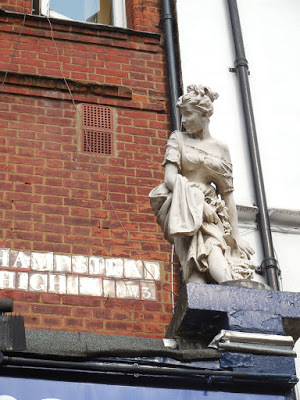 unidentified statue outside No. 28 Hampstead High Street
unidentified statue outside No. 28 Hampstead High StreetAfter most of a day happily tramping around Hampstead, we jumped aboard a bus and took a relaxing ride, all the way to the City of London, next time
Published on April 01, 2016 00:00
March 29, 2016
VIDEO WEDNESDAY - DAME EDITH SITWELL
Published on March 29, 2016 23:30
March 28, 2016
1816 FASHIONISTAS
What were the ladies of London wearing 200 years ago? According to the Fashion plates from La Belle Assemblee, Ackermann's Repository, and others, here are some examples from my collection.
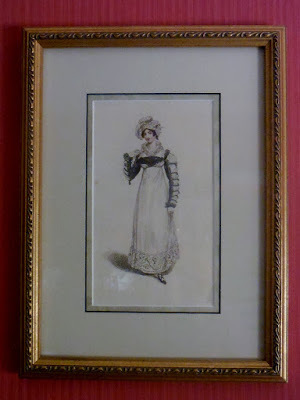 La Belle Assemblée July 1815, on my office wall: Waterloo Walking Dress
La Belle Assemblée July 1815, on my office wall: Waterloo Walking Dress
As I have posted before, the publishers of this magazine must have raced to find a suitable dress to commemorate the battle, something in the colors of mourning for the dead, yet expressive of the victorious celebration throughout the nation.
From the magazine: "Waterloo Walking Dress
This very beautiful dress, which answers the double purpose of walking or dinner dress, is composed of clear muslin and is made in a most original and tasteful style: the petticoat, as our readers will perceive by the Print, is ornamented in an elegant and appropriate manner with a tasteful black trimming. The body and sleeves, composed of an intermixture of black satin and clear muslin, are exquisitely fancied; they are made in a style of novelty, elegance, and simplicity which we never recollect being equalled in the mourning costume. The Waterloo dress, when worn for dinner parties, has no shirt, but some ladies shade the neck a little by a narrow frill of white crape round the bosom. In the walking costume it is worn with a shirt invented for the occasion, and trimmed in a very novel and appropriate style. Of the hat worn with this dress we can only observe that it is the most elegant and striking headdress ever invented for mourning; it is an intermixture of white satin and black crape, most tastefully ornamented with either black or white feathers. Black or white kid sandals and white kid gloves finish the dress, the effect of which altogether is much more elegant than our fair readers can conceive either from the Print or from our description. The above dress was invented by Mrs. Bell, Inventress of the Ladies Chapeau Bras and the Circassian Corset, and of whom only they can be had, at her Magazin des Modes, No. 26, Charlotte Street, Bedford-Square."
Now, moving into 1816:
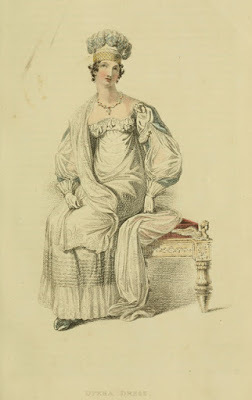 from Ackermann's, an Opera Dress, April 1816
from Ackermann's, an Opera Dress, April 1816
A few years ago, I was fortunate enough to acquire the two bound copies of 1816's La Belle Assemblee and one of 1815, each containing six monthly issues complete with fashion plates. For years, I read and copied material from them, a wonderful opportunity. Though the bindings were in poor condition, they were entirely readable and usable. The fashion plates, once scanned and framed, are hardly distinguishable from the originals.
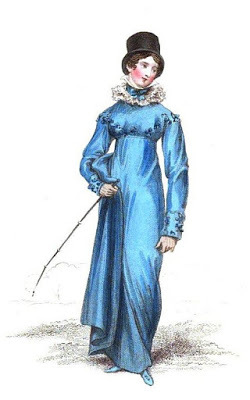 La Belle Assemblee: Riding Dress, June. 1816
La Belle Assemblee: Riding Dress, June. 1816
Sometimes when one goes to a library, the issues of the old magazines have had their fashion plates razored out. All those plates for sale on ebay and elsewhere come from someplace and many have been stolen. A pox on anyone who steals from libraries!!!
So I was eager to donate my three volumes to a place where they would be protected. To me, the best spot was Chawton House Library. Below, I am handing them to then-librarian Jacqui Grainger.
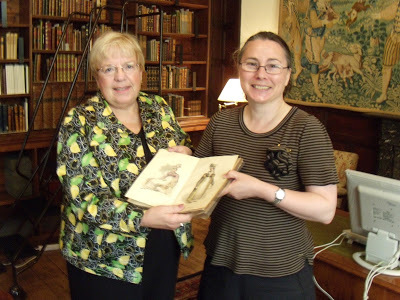 Victoria and JacquiDon't you love the shelves of books in the background andthe computer at the right?
Victoria and JacquiDon't you love the shelves of books in the background andthe computer at the right?
In order not to take the plates out of their frames, I found a few versions of those I own on other websites. A hunt will turn up most of them. Try Pinterest, for example, and the websites/blogs of experts and collectors like Candice Hern, Regency Encyclopedia, Rachel Knowles, Jane Austen's World, E.K. Duncan, and others.
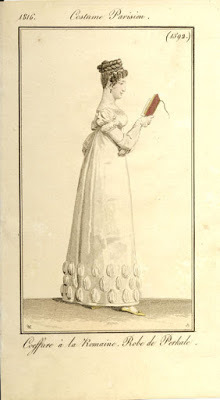 Coeffure a la Romaine, Robe de Perkale, from Costume Parisien, 1816
Coeffure a la Romaine, Robe de Perkale, from Costume Parisien, 1816
Above, I think she is far more interested in her book than in her appearance, though the hem decoration is unusual and may attract some comment on the ballroom floor.
 La Belle Assemblée July 1815, on my office wall: Waterloo Walking Dress
La Belle Assemblée July 1815, on my office wall: Waterloo Walking DressAs I have posted before, the publishers of this magazine must have raced to find a suitable dress to commemorate the battle, something in the colors of mourning for the dead, yet expressive of the victorious celebration throughout the nation.
From the magazine: "Waterloo Walking Dress
This very beautiful dress, which answers the double purpose of walking or dinner dress, is composed of clear muslin and is made in a most original and tasteful style: the petticoat, as our readers will perceive by the Print, is ornamented in an elegant and appropriate manner with a tasteful black trimming. The body and sleeves, composed of an intermixture of black satin and clear muslin, are exquisitely fancied; they are made in a style of novelty, elegance, and simplicity which we never recollect being equalled in the mourning costume. The Waterloo dress, when worn for dinner parties, has no shirt, but some ladies shade the neck a little by a narrow frill of white crape round the bosom. In the walking costume it is worn with a shirt invented for the occasion, and trimmed in a very novel and appropriate style. Of the hat worn with this dress we can only observe that it is the most elegant and striking headdress ever invented for mourning; it is an intermixture of white satin and black crape, most tastefully ornamented with either black or white feathers. Black or white kid sandals and white kid gloves finish the dress, the effect of which altogether is much more elegant than our fair readers can conceive either from the Print or from our description. The above dress was invented by Mrs. Bell, Inventress of the Ladies Chapeau Bras and the Circassian Corset, and of whom only they can be had, at her Magazin des Modes, No. 26, Charlotte Street, Bedford-Square."
Now, moving into 1816:
 from Ackermann's, an Opera Dress, April 1816
from Ackermann's, an Opera Dress, April 1816A few years ago, I was fortunate enough to acquire the two bound copies of 1816's La Belle Assemblee and one of 1815, each containing six monthly issues complete with fashion plates. For years, I read and copied material from them, a wonderful opportunity. Though the bindings were in poor condition, they were entirely readable and usable. The fashion plates, once scanned and framed, are hardly distinguishable from the originals.
 La Belle Assemblee: Riding Dress, June. 1816
La Belle Assemblee: Riding Dress, June. 1816Sometimes when one goes to a library, the issues of the old magazines have had their fashion plates razored out. All those plates for sale on ebay and elsewhere come from someplace and many have been stolen. A pox on anyone who steals from libraries!!!
So I was eager to donate my three volumes to a place where they would be protected. To me, the best spot was Chawton House Library. Below, I am handing them to then-librarian Jacqui Grainger.
 Victoria and JacquiDon't you love the shelves of books in the background andthe computer at the right?
Victoria and JacquiDon't you love the shelves of books in the background andthe computer at the right? In order not to take the plates out of their frames, I found a few versions of those I own on other websites. A hunt will turn up most of them. Try Pinterest, for example, and the websites/blogs of experts and collectors like Candice Hern, Regency Encyclopedia, Rachel Knowles, Jane Austen's World, E.K. Duncan, and others.
 Coeffure a la Romaine, Robe de Perkale, from Costume Parisien, 1816
Coeffure a la Romaine, Robe de Perkale, from Costume Parisien, 1816Above, I think she is far more interested in her book than in her appearance, though the hem decoration is unusual and may attract some comment on the ballroom floor.
Published on March 28, 2016 00:00
March 24, 2016
POST-TOUR: EXPLORING HAMPSTEAD, PART ONE
Victoria, here, picking up after our visit to Ben Franklin's House. Since Hampstead was a neighborhood of London we had not sufficiently explored, Kristine and I found a B and B there for the remaining days of our stay in England.
Accordingly, we did a bit of wandering about, by no means covering all of the area's treats. We had already visited Kenwood House on the Heath prior to the Duke of Wellington Tour. And trekked through nearby Highgate Cemetery (for our posts on these adventures click here and here for Kenwood House. Click here and here for Highgate Cemetery).
High on our "must see" list was St. John's Church, where we expected to find the grave of John Constable right after the wonderful exhibition we had just seen at the Victoria and Albert Museum.
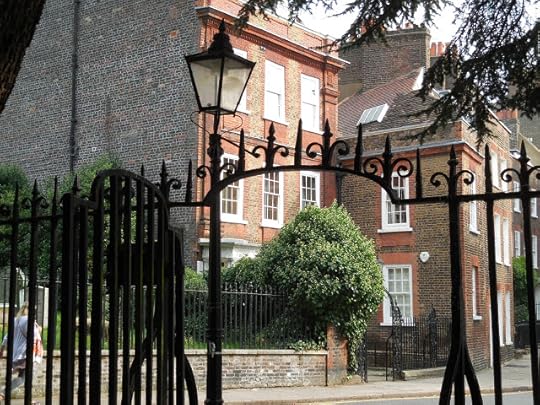
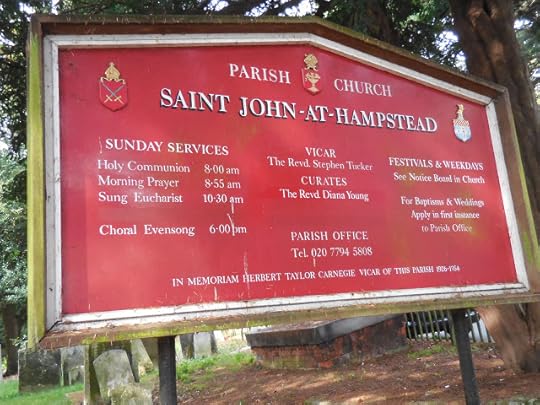
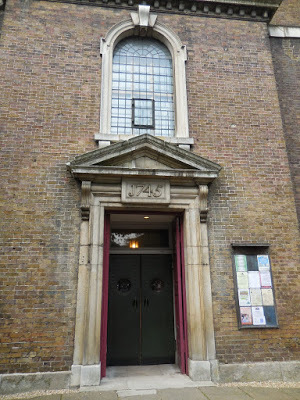
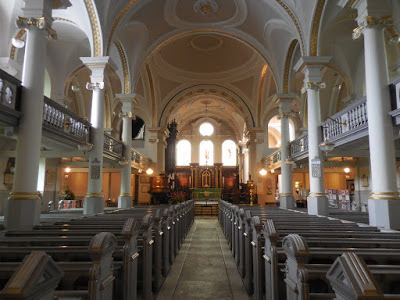
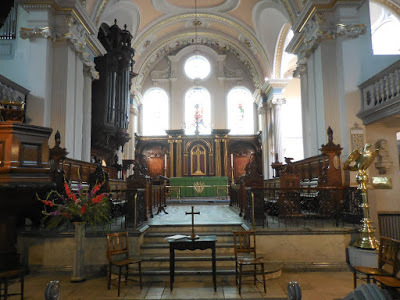
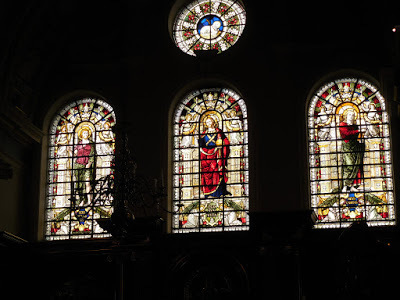
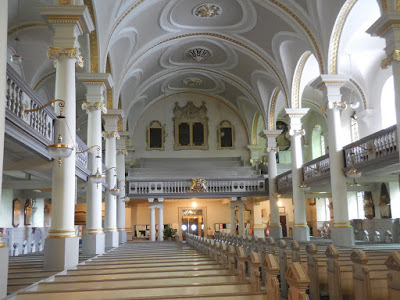
After exploring the interior of the Church, we consulted a map of the graveyard and, with the help of an attendant, went straight to Constable's tomb.
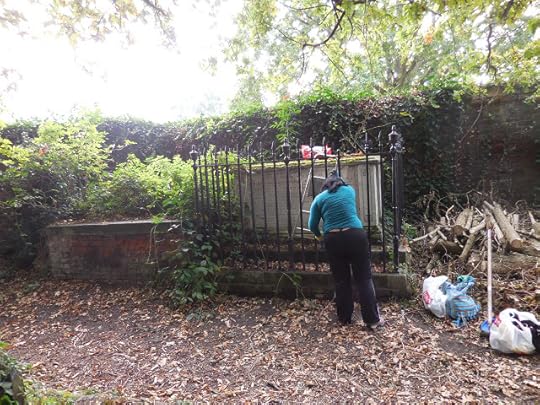
We were surprised to find a local resident and volunteer cleaning the stone and trimming the ivy. She'd brought her equipment and told us she found it unacceptable that the gravesite should be so neglected. We agreed, and the attendant quietly faded away, perhaps chagrined we'd found his duties equally neglected. We loved chatting with the volunteer, a immigrant to Britain in her earlier years. Brava to her! If (when?) we moved to Britain, I would hope Kristine and I would be out there trimming and scrubbing anything that needed attention too.
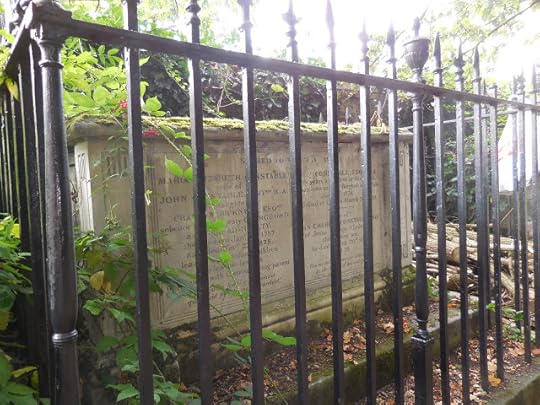 Tomb of John Constable
Tomb of John Constable
Inscriptions on the tomb read :"Sacred to the Memory of Maria Elizabeth Constable, wife of John Constable, Esq. RA, daughter of Charles Bicknell, Esq. solicitor to His Majesty King George IV and to the Admiralty; born Jan. 15, 1787 died November 23, 1828, leaving seven infant children to lament her loss in common with their surviving parent. John Constable, Esq., RA, many years resident in this parish, he was born at East Bergholt in Suffolk June 11, 1776 and died in London March 31, 1837. Also of John Charles Constable, Esq. of Jesus College, Cambridge, their eldest son, he died March 30, 1841, aged 23. His mortal remains are interred in the chapel of his college. Also of Charles Golding Constable, 1821-1878 of the British East India navy."
Nearby we found another grave taken care of by an unknown benefactor: the stone marking the resting place of Jane Austen's aunt, Philadelphia Hancock, as well as those of a cousin and the cousin's young son.
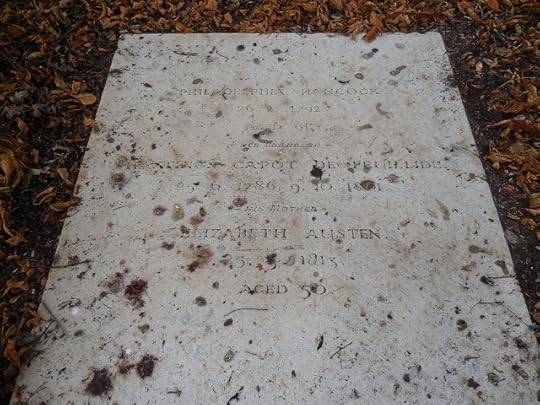
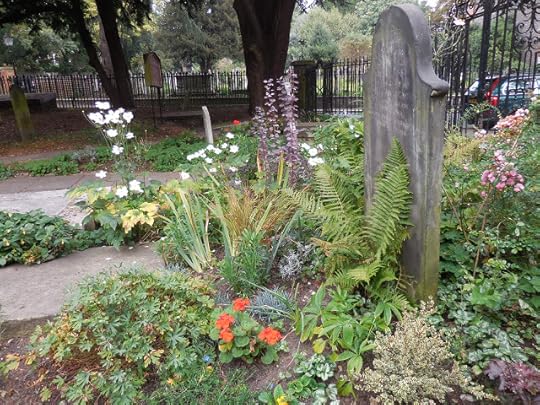
A few of the graves near the church itself were well tended, but the majority of the graveyard was decidedly unkempt - the paths swept, but the stones tilting and leaning in every direction, overgrown with ivy and dead leaves. Certainly picturesque. Here are a few of the photos we took along the way.
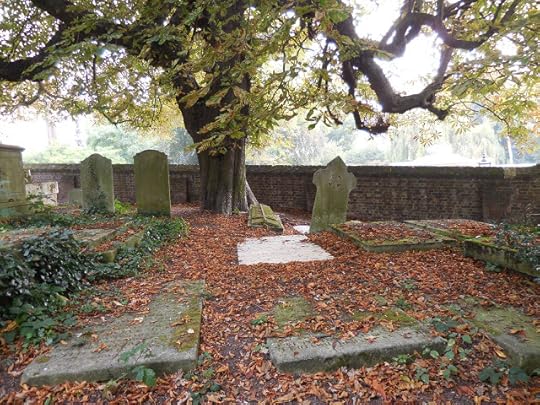
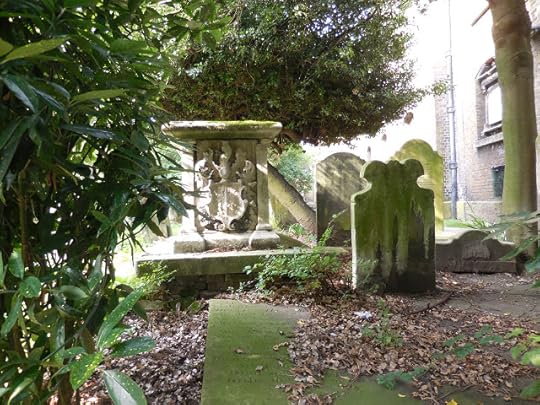
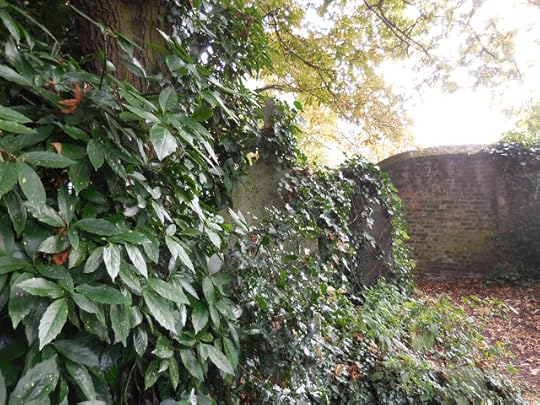
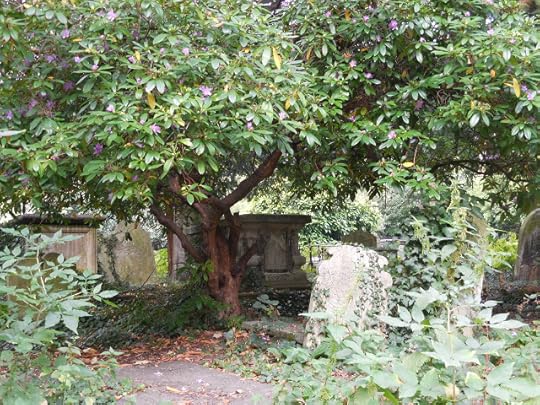
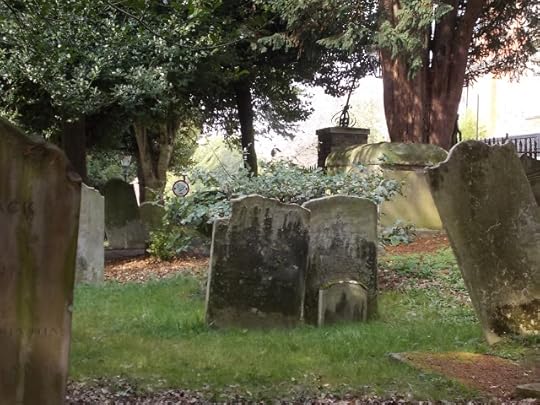
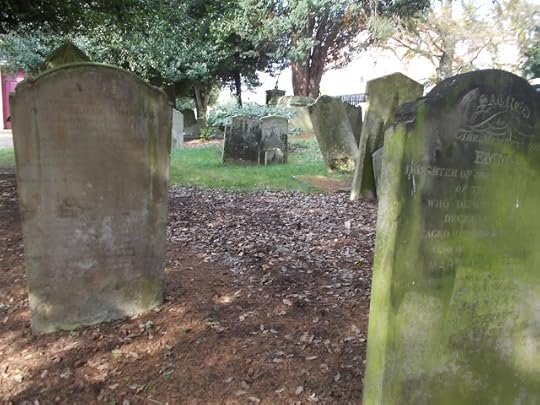
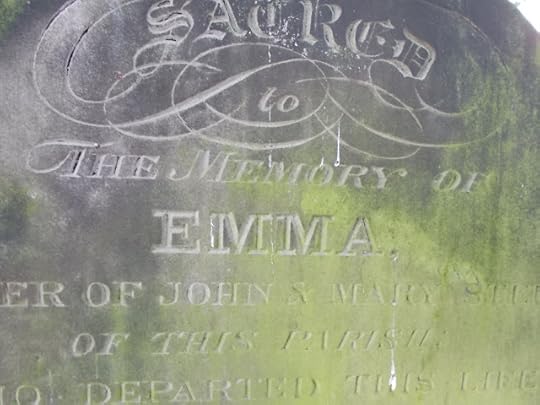
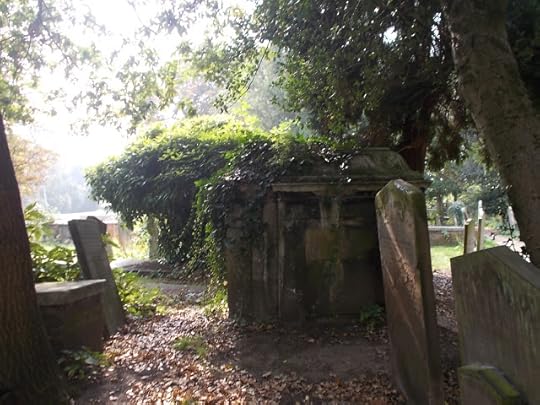
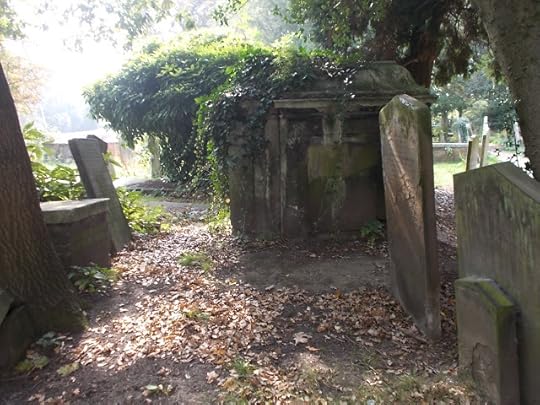
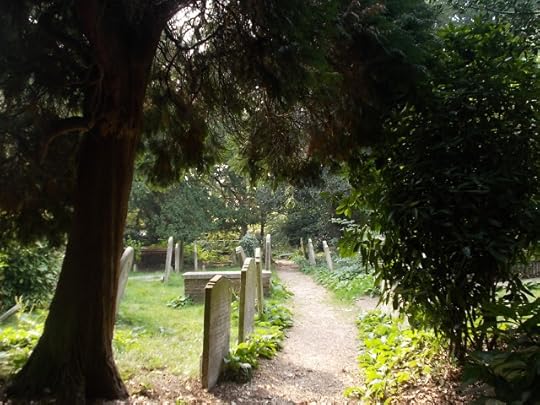
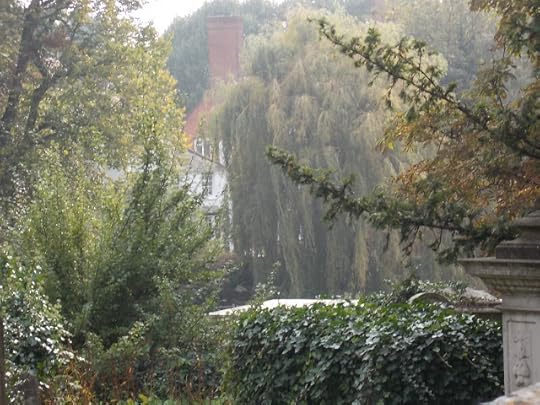
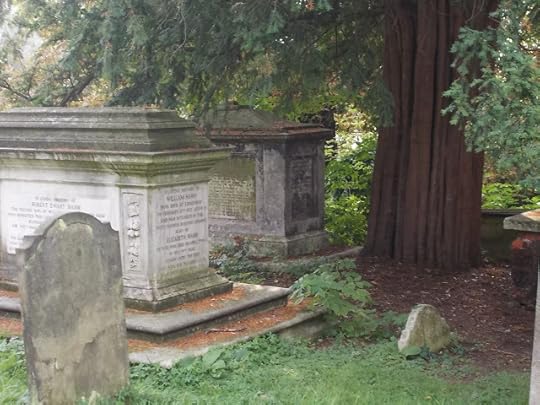
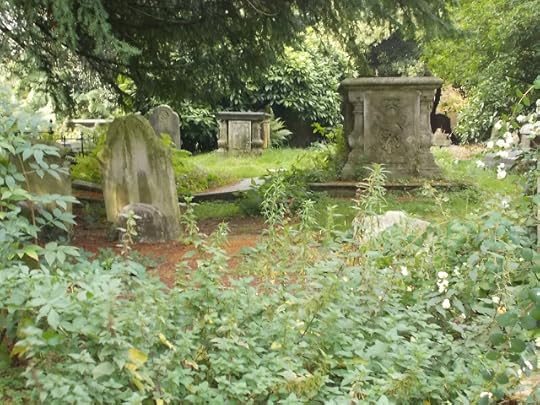
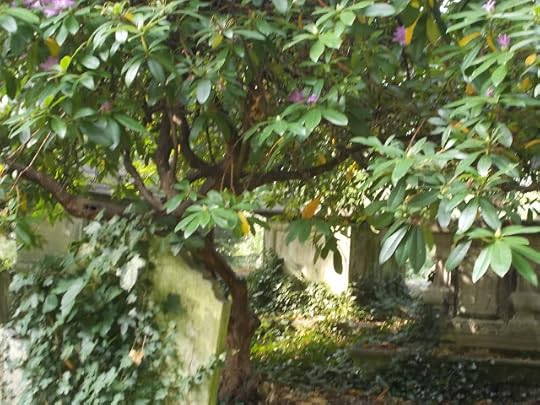
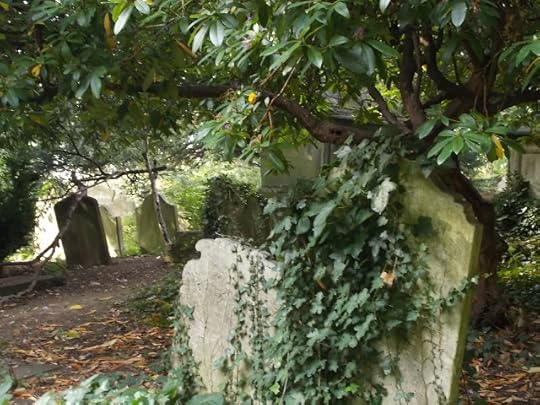
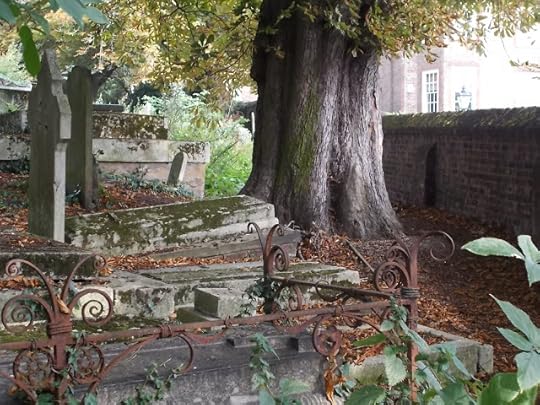
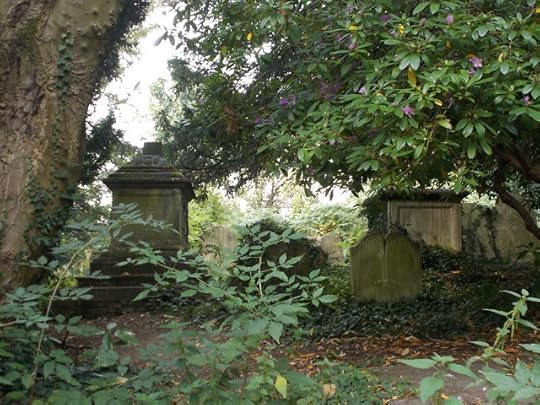
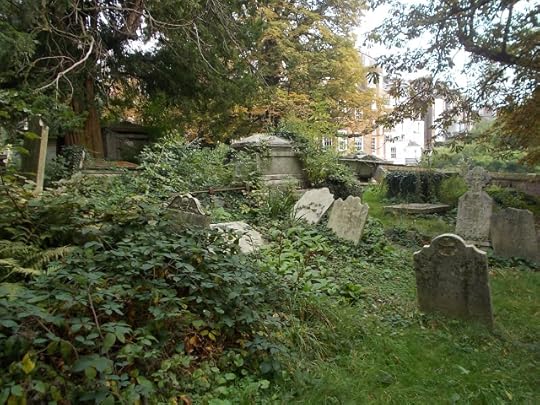
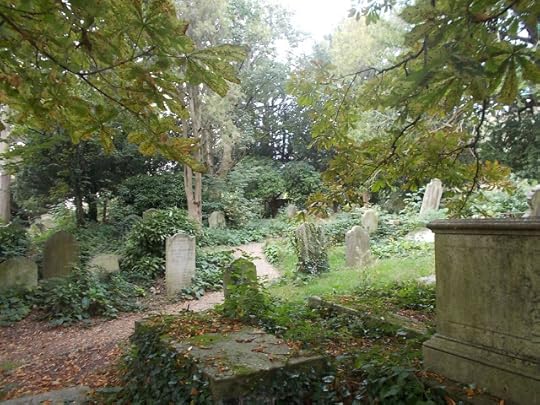
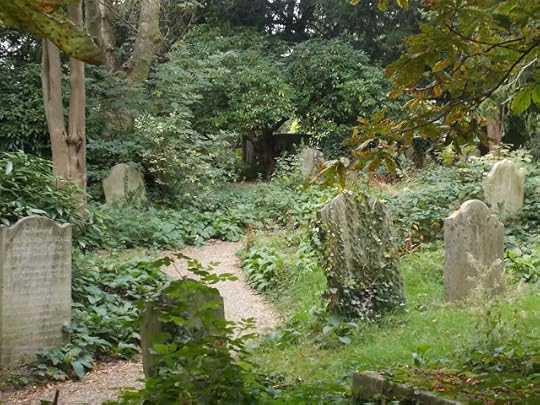
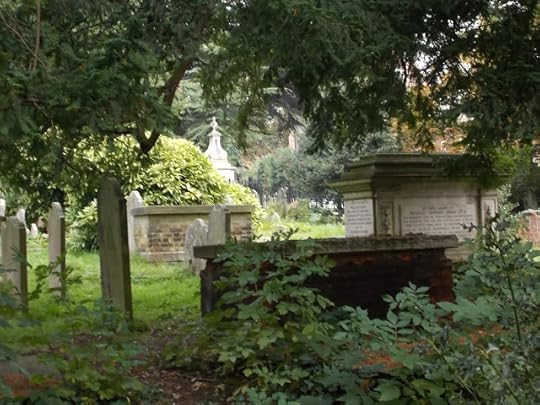
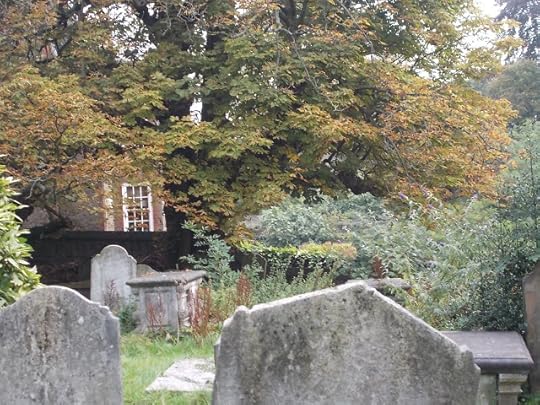
Apparently we were captivated by the foliage, stones and atmosphere of the area! Took a multitude of pictures, didn't we?
Accordingly, we did a bit of wandering about, by no means covering all of the area's treats. We had already visited Kenwood House on the Heath prior to the Duke of Wellington Tour. And trekked through nearby Highgate Cemetery (for our posts on these adventures click here and here for Kenwood House. Click here and here for Highgate Cemetery).
High on our "must see" list was St. John's Church, where we expected to find the grave of John Constable right after the wonderful exhibition we had just seen at the Victoria and Albert Museum.







After exploring the interior of the Church, we consulted a map of the graveyard and, with the help of an attendant, went straight to Constable's tomb.

We were surprised to find a local resident and volunteer cleaning the stone and trimming the ivy. She'd brought her equipment and told us she found it unacceptable that the gravesite should be so neglected. We agreed, and the attendant quietly faded away, perhaps chagrined we'd found his duties equally neglected. We loved chatting with the volunteer, a immigrant to Britain in her earlier years. Brava to her! If (when?) we moved to Britain, I would hope Kristine and I would be out there trimming and scrubbing anything that needed attention too.
 Tomb of John Constable
Tomb of John ConstableInscriptions on the tomb read :"Sacred to the Memory of Maria Elizabeth Constable, wife of John Constable, Esq. RA, daughter of Charles Bicknell, Esq. solicitor to His Majesty King George IV and to the Admiralty; born Jan. 15, 1787 died November 23, 1828, leaving seven infant children to lament her loss in common with their surviving parent. John Constable, Esq., RA, many years resident in this parish, he was born at East Bergholt in Suffolk June 11, 1776 and died in London March 31, 1837. Also of John Charles Constable, Esq. of Jesus College, Cambridge, their eldest son, he died March 30, 1841, aged 23. His mortal remains are interred in the chapel of his college. Also of Charles Golding Constable, 1821-1878 of the British East India navy."
Nearby we found another grave taken care of by an unknown benefactor: the stone marking the resting place of Jane Austen's aunt, Philadelphia Hancock, as well as those of a cousin and the cousin's young son.


A few of the graves near the church itself were well tended, but the majority of the graveyard was decidedly unkempt - the paths swept, but the stones tilting and leaning in every direction, overgrown with ivy and dead leaves. Certainly picturesque. Here are a few of the photos we took along the way.






















Apparently we were captivated by the foliage, stones and atmosphere of the area! Took a multitude of pictures, didn't we?
Published on March 24, 2016 23:30
March 22, 2016
VIDEO WEDNESDAY - STEPHEN FRY'S KEY TO THE CITY OF LONDON

In Exploring the Mysteries of the City of London (46 mins), Stephen Fry is prompted to delve into the history of London after being honoured with the Freedom of the City and so takes us on a tour of London the likes of which you've never seen. Join him as he explores the Square Mile and takes us on behind-the-scenes visits to Tower Bridge, the trading floor at the London Metal Exchange, the Bank of England, the Old Bailey and remnants of Newgate Prison, a Roman bath house below a modern office block, Lloyd's of London and the City Livery Company. If that's not enough for you, he also introduces us to Beadles without the Guildhall, the Lord Mayor, banker Lord Levine, skyscraper window washers, bee keepers and Doris McGovern - wait till you meet Doris. She's a corker.
This is good stuff! Watch it here.
Published on March 22, 2016 23:30
Kristine Hughes's Blog
- Kristine Hughes's profile
- 6 followers
Kristine Hughes isn't a Goodreads Author
(yet),
but they
do have a blog,
so here are some recent posts imported from
their feed.




